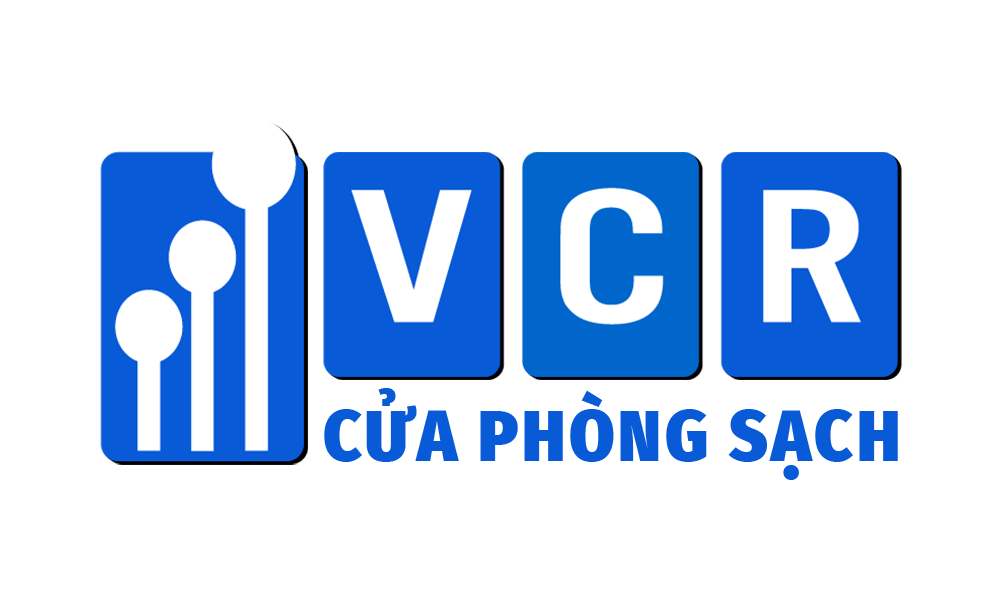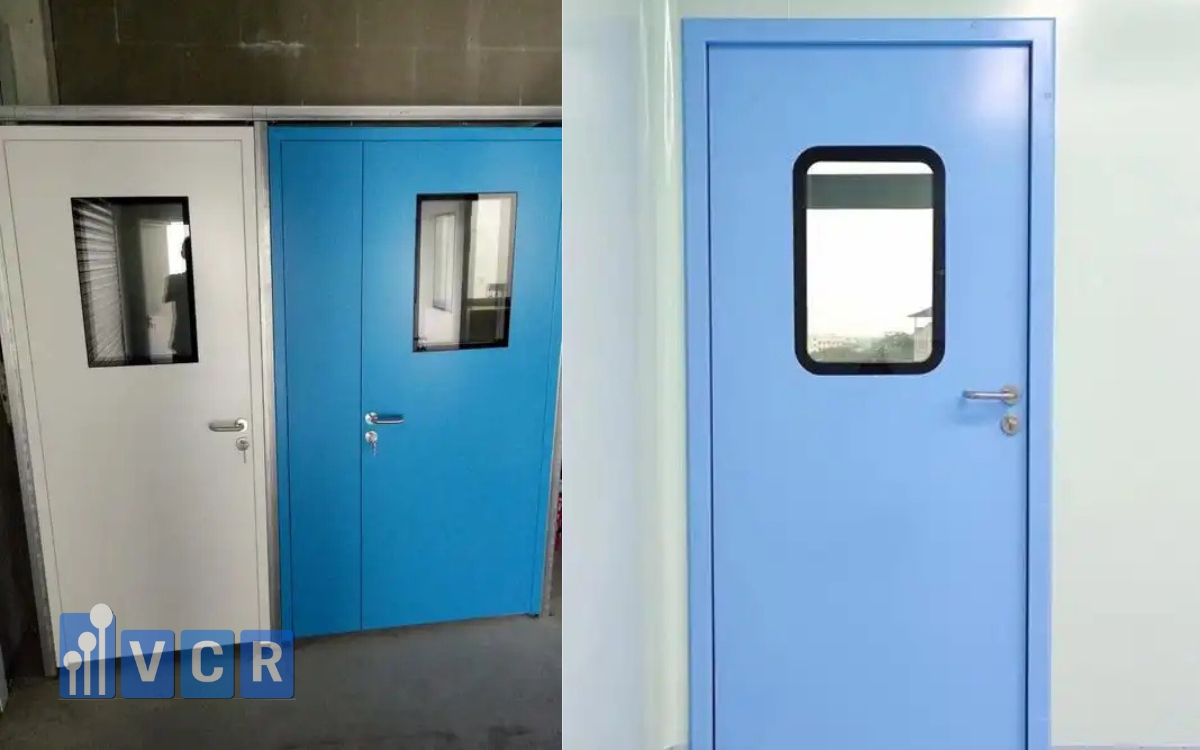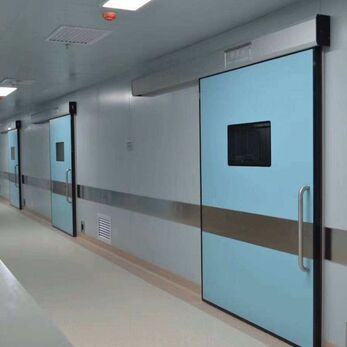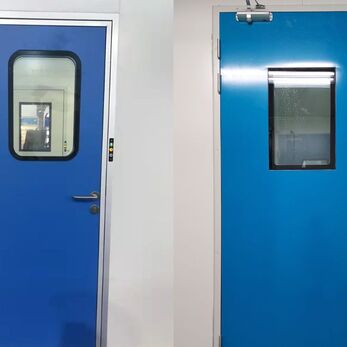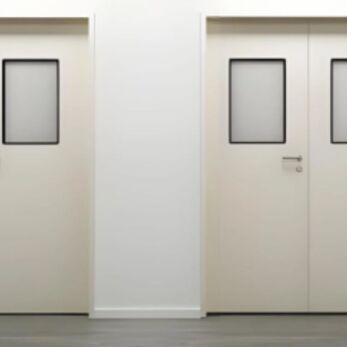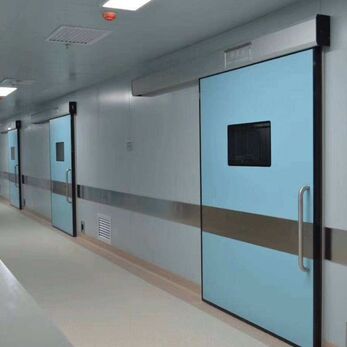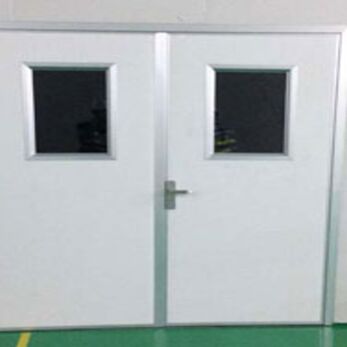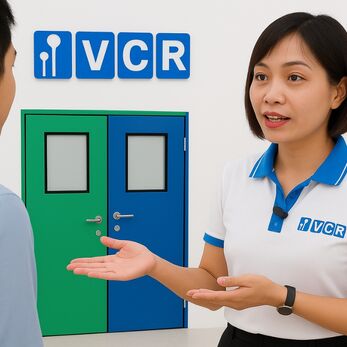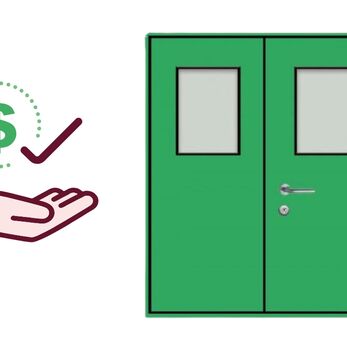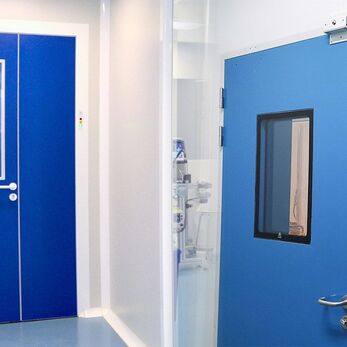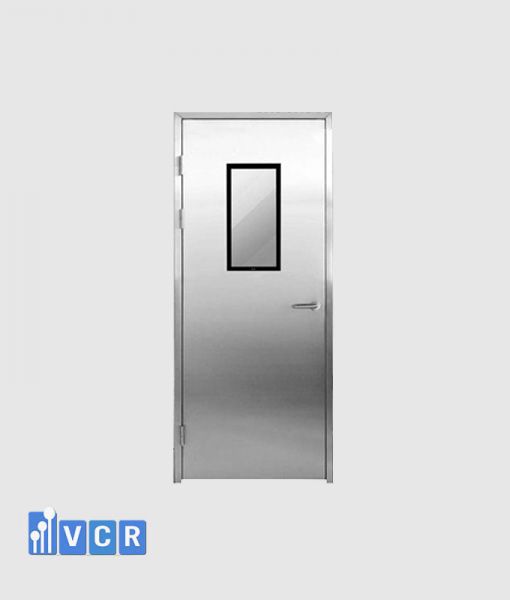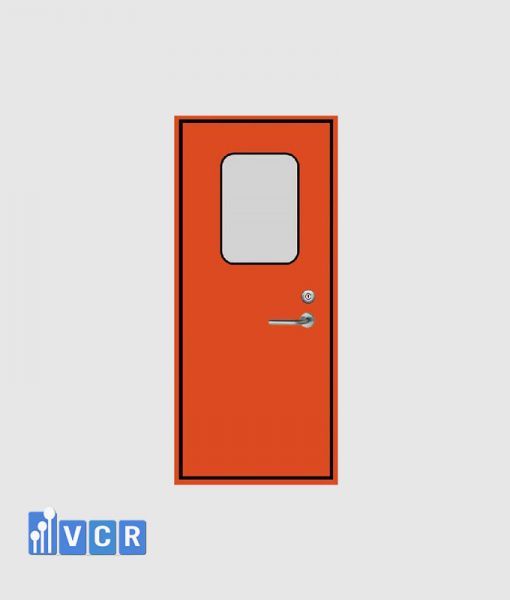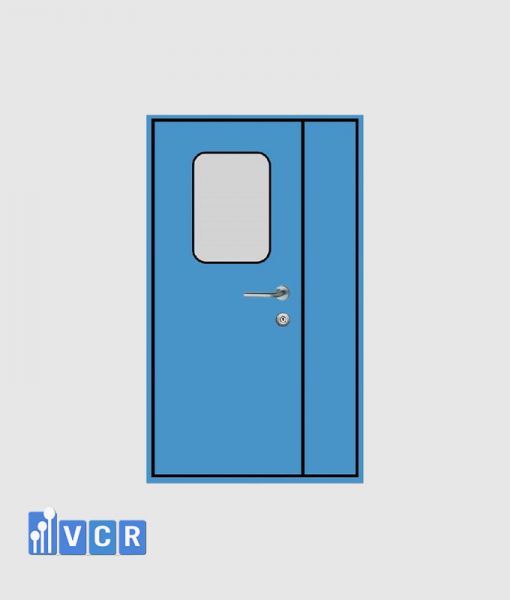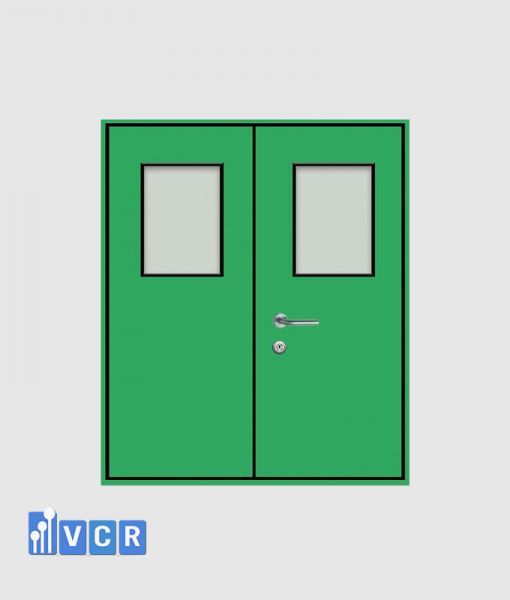Clean room doors are not only entrances but also “shields” that protect the production environment in food factories from dust, microorganisms and insects. With the ability to maintain room pressure, prevent cross-contamination and integrate access control systems, clean room doors play an important role in meeting HACCP, GMP and ISO 22000 standard
- 1. Overview of Cleanroom Doors in the Food Industry
- 2. Factors Affecting the Price of Cleanroom Doors in the Food Industry
- 3. Latest 2025 Price List for Cleanroom Doors
- 4. Notes When Choosing Cleanroom Doors for Food Factories
- 5. Ordering and Installation Process at VCR
- 6. FAQ – Frequently Asked Questions
- 7. Contact for quote and solution consultation
1. Overview of Cleanroom Doors in the Food Industry
1.1 Function and Role in Contamination Control
Cleanroom doors in food factories are not merely entryways; they are an integral part of the contamination control system. Their main functions include:
- Preventing cross-contamination: Keeping clean areas separated from raw production zones or areas with a high risk of contamination.
- Maintaining room pressure: Working with HVAC systems and interlock mechanisms to ensure the required positive or negative pressure differential.
- Minimizing dust, microorganisms, and insect intrusion: Smooth surfaces with minimal gaps for easy cleaning and reduced particle buildup.
- Access control integration: Allowing installation of electronic locks, sensors, or interlock systems to regulate personnel movement.
Due to the specific demands of the food industry, cleanroom doors are typically made from 304 stainless steel, HPL panels, or powder-coated aluminum to resist corrosion, enable easy cleaning, and meet food safety standards.
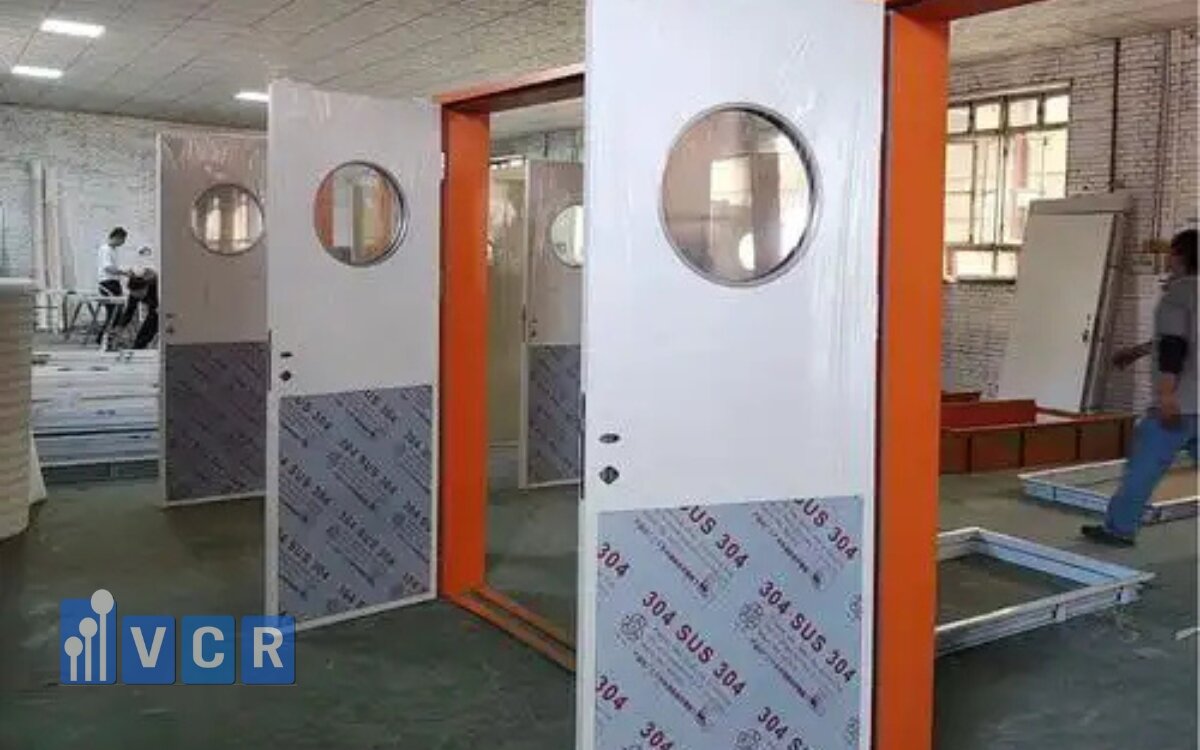
1.2 Applicable Standards
To meet safety and product quality requirements, cleanroom doors in food factories must comply with international standards and industry regulations, including:
- GMP (Good Manufacturing Practice): Guidelines for designing and operating manufacturing facilities to ensure hygiene, safety, and food quality.
- HACCP (Hazard Analysis and Critical Control Points): A food safety management system based on hazard analysis and critical control point monitoring, requiring that equipment and doors do not pose contamination risks.
- ISO 14644: International standard for cleanroom classification based on particle size and allowable airborne particle concentrations.
2. Factors Affecting the Price of Cleanroom Doors in the Food Industry
The price of cleanroom doors is not fixed and depends on multiple technical and operational factors. Understanding these factors helps businesses choose products that fit the budget while meeting hygiene and food safety standards.
2.1 Material & Structure
- Powder-coated steel: Moderate cost, smooth surface, good scratch and corrosion resistance. Suitable for dry areas with low chemical exposure.
- 304 Stainless steel: High corrosion resistance, durable in humid environments, easy to clean. More expensive than powder-coated steel but longer lifespan.
- HPL panel: Lightweight, good insulation, available in various colors. Ideal for packaging and inspection areas.
Note: Multi-layer doors (honeycomb core, Rockwool core, etc.) are more expensive due to added soundproofing, insulation, or fire resistance.
2.2 Required Cleanroom Class
- ISO 8: Common in food processing areas; doors must ensure airtightness and easy-to-clean surfaces.
- ISO 7: Used in functional food manufacturing or inspection rooms requiring stricter particle control.
The higher the cleanroom class → the stricter the door specifications → the higher the cost.
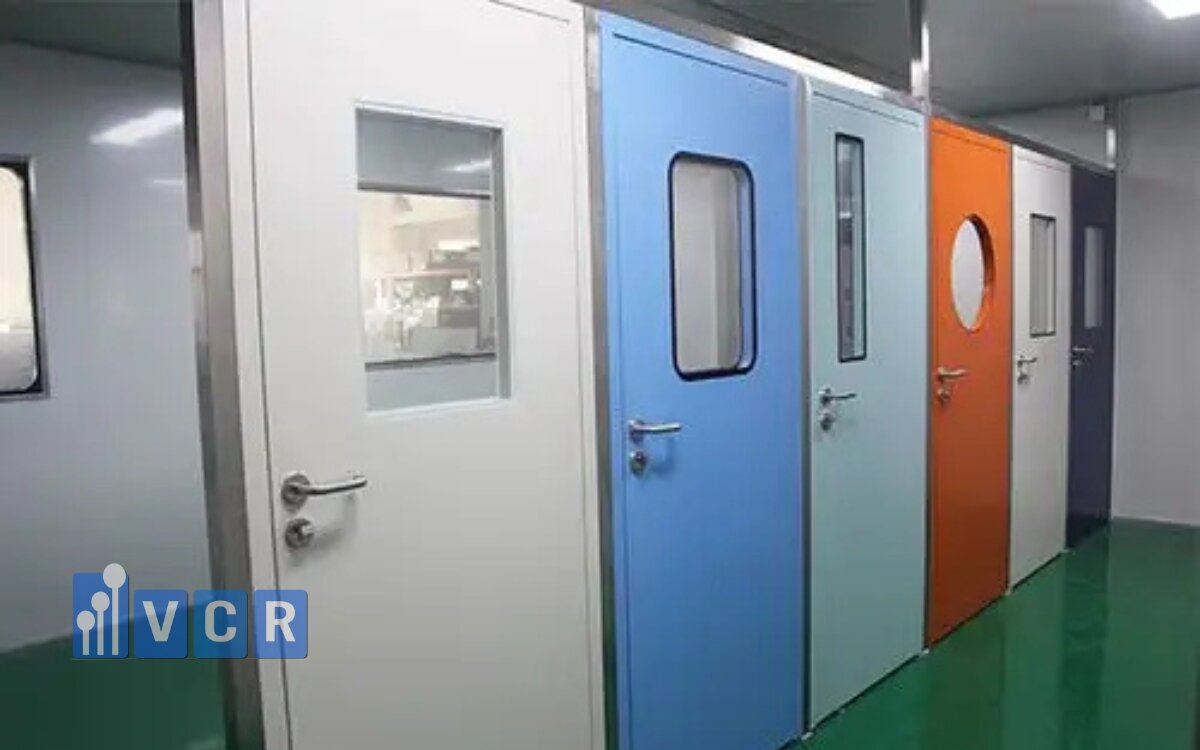
2.3 Size and Design
- Single-leaf doors: Common for personal entry points; lower cost.
- Double-leaf doors: Used for transporting goods; require stronger hinges and frames.
- Doors with observation windows: Improve visibility but require tempered glass and anti-dust design.
2.4 Accessories & Additional Technology
- Interlock systems: Prevent two doors from being opened simultaneously, maintaining pressure and cleanliness.
- Dust-proof & magnetic gaskets: Ensure airtightness.
- Tempered glass: Increases safety and visibility.
- Sensors & automation: Improve convenience but add to cost.
2.5 Manufacturing & Transportation Factors
- Domestic production: Competitive pricing, fast delivery, easy maintenance.
- Imported: Greater variety in quality and design but higher price, longer lead times, and higher shipping costs.
3. Latest 2025 Price List for Cleanroom Doors
The table below provides an overview of cleanroom door investment costs for food factories. Prices may vary depending on size, technical requirements, cleanroom class, and order timing.
|
Door Type |
Material / Structure |
Standard Size (mm) |
Price Range (VND) |
Application |
|
Honeycomb panel door |
HPL or steel panel, paper/aluminum honeycomb core, smooth, easy-to-clean surface |
900 x 2100 |
8,500,000 – 10,500,000 |
Processing, packaging areas |
|
Powder-coated aluminum door |
Aluminum frame, powder coating, tempered glass |
900 x 2100 |
7,500,000 – 9,000,000 |
Factory offices, QC rooms |
|
304 stainless steel frame door |
0.8–1.0 mm thick 304 stainless steel, welded frame |
900 x 2100 |
9,500,000 – 11,500,000 |
Humid areas, light chemical exposure |
|
Rockwool fireproof core door |
Steel or stainless panel, Rockwool mineral wool core, 60–90 min fire rating |
Custom |
12,000,000 – 15,000,000 |
Fire-protected areas, storage rooms |
|
Automatic door (panel or stainless) |
HPL panel or 304 stainless steel, motorized, infrared sensor |
Custom |
20,000,000 – 28,000,000 |
Main entrances, controlled-access areas |
Prices exclude VAT and installation fees. VCR offers turnkey solutions from survey – manufacturing – installation – commissioning.
See more: VCR clean room doors are popular with customers today
4. Notes When Choosing Cleanroom Doors for Food Factories
4.1 Compliance with Hygiene and Food Safety Standards
- Must meet GMP, HACCP, and ISO 14644 to prevent cross-contamination.
- Surfaces should be smooth, waterproof, non-dust generating, and free from harmful substances.
4.2 Easy to Clean and Corrosion-Resistant
- Use 304 stainless steel, powder-coated aluminum, or HPL panels for rust resistance and easy cleaning.
- Minimize gaps to reduce dust and microbial buildup.
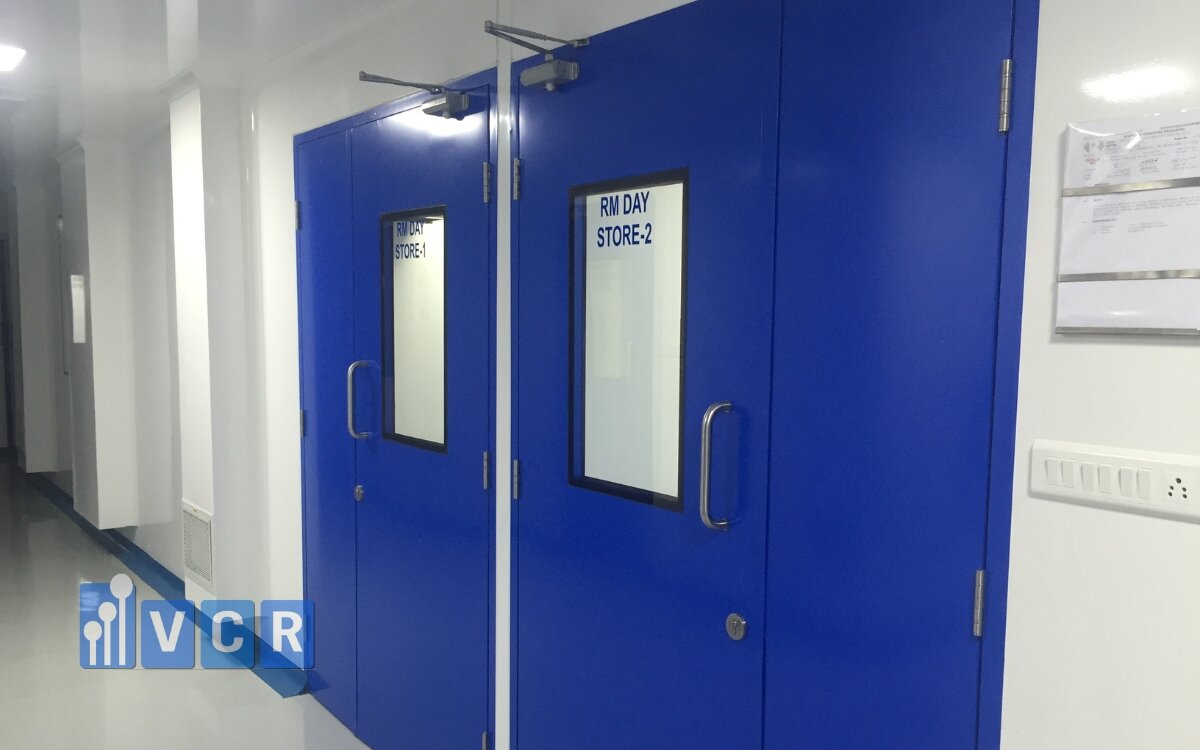
4.3 Airtightness and Area Isolation
- Install rubber or magnetic gaskets to ensure airtightness and maintain room pressure.
- Doors and hinges must be robust to prevent warping over time.
4.4 Integration with Interlock and Access Control Systems
- Should allow interlock installation to prevent simultaneous opening of multiple doors.
- Can integrate with card, fingerprint, or sensor access systems for restricted areas.
See more: Why Automatic Doors are the Superior Choice for Pharmaceutical Cleanrooms
5. Ordering and Installation Process at VCR
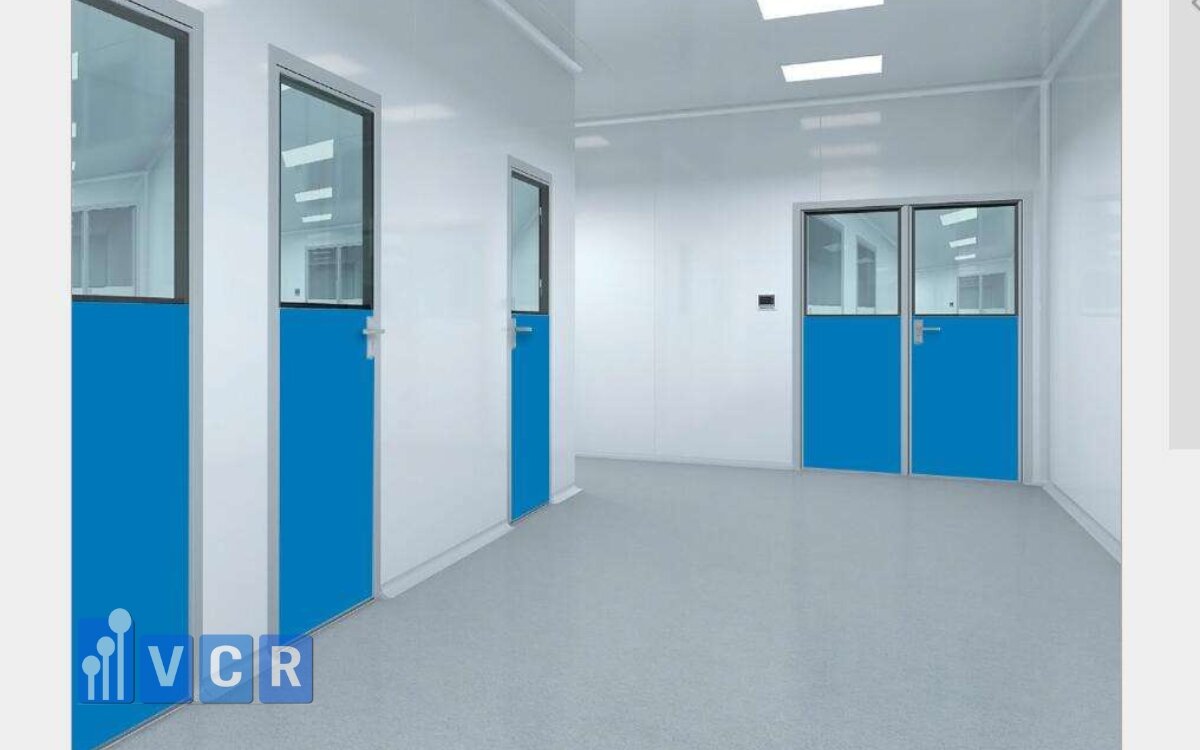
VCR provides end-to-end consultation – manufacturing – installation services for cleanroom doors in food factories, ensuring compliance with standards and technical requirements. The process includes:
- Request Intake
- Client provides details on door type, dimensions, materials, and applicable standards.
- Technical team notes special requirements such as interlocks, automation, or fireproofing.
- Site Survey
- Measurements and environmental assessment.
- Check pressure conditions, traffic flow, and sanitation needs.
- Detailed Quotation
- Transparent pricing for product, accessories, transport, and installation.
- Cost optimization while meeting standards.
- Production & Quality Control
- Manufacturing at VCR’s factory or importing as required.
- Testing for airtightness, corrosion resistance, and accessory performance.
- Installation – Commissioning – Handover
- Professional installation ensuring airtightness and safety.
- Joint acceptance testing and delivery of technical documents, user guides, and warranties.
VCR Commitment: Every project is completed on schedule, to standard, and with ongoing maintenance support.
See more: Expert Guide to Cleanroom Steel Door Installation
6. FAQ – Frequently Asked Questions
6.1 Do cleanroom doors for the food industry need to meet ISO 14644?
Yes. Depending on the production area, cleanroom doors usually meet ISO 14644 (ISO 8 or ISO 7) for dust and microbial control, along with GMP and HACCP compliance.
6.2 Is installation included in the price?
It depends on the quotation. At VCR, most prices include installation, but exclude VAT. The full package price is clearly stated during consultation.
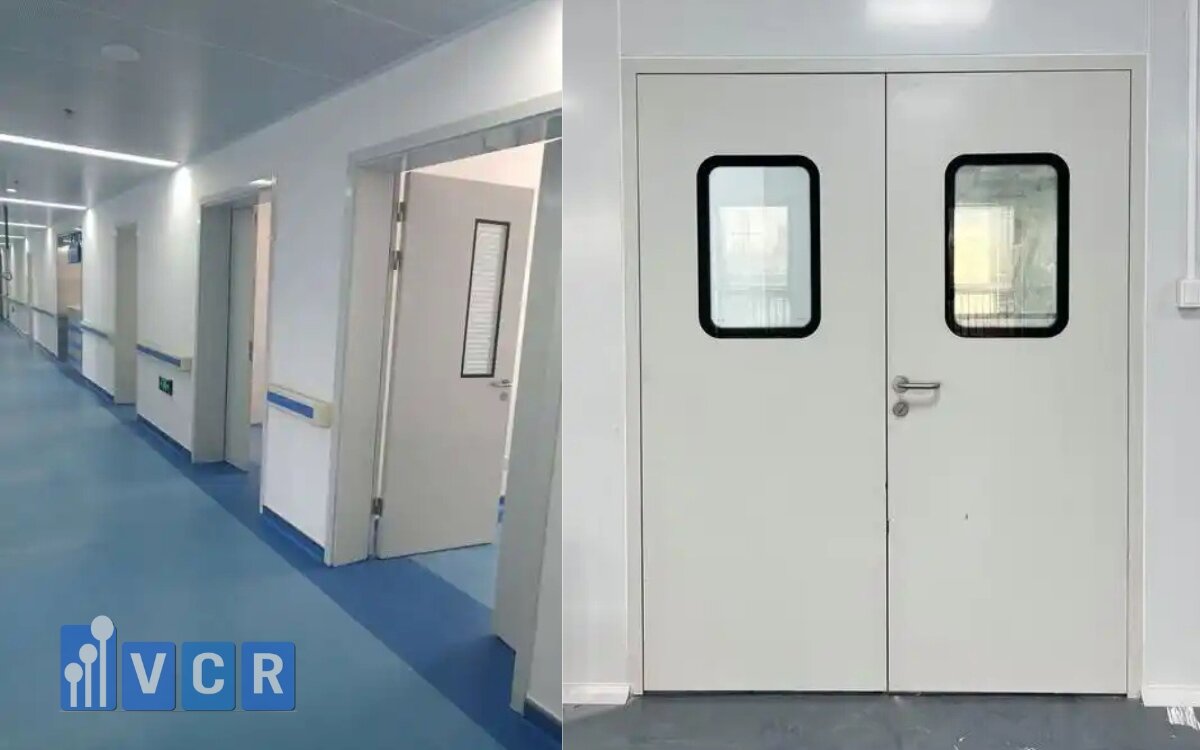
6.3 Can you manufacture custom-sized doors?
Yes. VCR produces custom-sized and custom-designed cleanroom doors to match factory layouts, including fireproof, automatic, and interlock doors.
6.4 Comparison: Stainless Steel vs. HPL Panel Doors
|
Criteria |
304 Stainless Steel |
HPL Panel |
|
Durability |
Very high, corrosion-resistant, long lifespan |
Moderate, good moisture resistance |
|
Cleanability |
Easy to clean, tolerates mild chemicals |
Easy to clean, lighter than stainless |
|
Weight |
Heavier, requires strong frame & hinges |
Lighter, easier to install |
|
Price |
Higher |
Lower |
|
Suitable Applications |
Humid, chemical exposure areas |
Packaging, inspection areas |
7. Contact for quote and solution consultation
Looking for standard-compliant cleanroom doors for your food factory?
VCR offers a complete package from consultation – manufacturing – installation – warranty, ensuring:
- Compliance with ISO 14644, GMP, HACCP
- Premium materials: 304 stainless steel, HPL panels, powder-coated aluminum
- Custom designs, various sizes and features
- Competitive prices, fast delivery
Hotline: 090.123.9008
Email: [email protected]
Website: https://cuaphongsachvcr.com/
Contact us today for a detailed quotation and free consultation for your project!
Diep VCR


